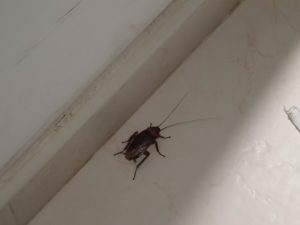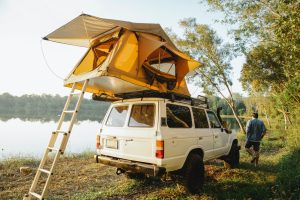
Three weeks in and I still have not been captured by guerrillas or beheaded by cartels. Success so far I’d say.
Somehow prying myself away from the intoxicating city of Medellín, I made the long, neck and back-aching, 13-hour ride north leaving the mountainous interior for the dryer, albeit more humid and flatter coast.
The transition was stark, especially going from winding switch back turns with breathtaking views to long open straightaways with tunnels of trees whipping past. My elation of arriving in the famous Caribbean city of Cartagena was short-lived as I spent more than an hour frustratingly working my way through the choked city traffic, the heat and humidity making me sweat like a crackhead going through withdrawals.
After a 12+ hour day of riding, my neck, my arse, and my patience held out just long enough to finally arrive in the area of Boquilla. This lower income, predominantly African-descent barrio or neighborhood sits right on the Caribbean coast just northeast of Cartagena. I chose it to be outside of the main city to safely store the bike and see a very different area than what the typical tourist sees. In fact, it’s likely that almost no tourist sees any of this; it’s where the poorer locals live and it was clear that they were more surprised to see me there than I was in seeing their neighborhood for the first time.

The next day, arising from a coma-like sleep in my basic but luxuriously air-conditioned hotel room, I meandered out onto the dusty back roads of Boquilla and ventured back towards Cartagena on my beloved KTM motorcycle. My confidence in handling the orange beast was growing and without the bike loaded down with gear, I nimbly worked my way through standstill traffic. My ego was quickly deflated when I grazed the bumper of a stationary taxi with my pannier – the driver hopping out to be instantly met with my profuse apologies. Thankfully there was just a minor scratch and the mildly annoyed driver, sandwiched between an acre of grumbling traffic in the late morning Caribbean heat, accepted my apologies and we went our separate ways; my tail slightly between my legs. You dumb ass. Pay better attention and don’t get ahead of yourself.
Castillo de San Felipe de Barajas
My target for the day is the famous fortress/castle, Castillo de San Felipe de Barajas. It is arguably the greatest fortress the Spanish built in any of their colonies; I can’t say this with authority but it’s what I’ve been told and I don’t know enough to deny it. The stone castle was built mainly to defend against pirates and for obvious reasons, it was never taken.
Looming over the land from its hill position, the grand fortified structure is an intimidating sight. As a daydreaming history nerd, I eagerly bought my ticket and strolled up the ramps and stairs to gain entry; a feat the pirates would never have dreamed of. As a history nerd meandering from the scorching, sunlit courtyards to the much cooler maze of tunnels connecting various parts of the fortress, it was hard not to slip into vivid daydreams of what it might have been like to occupy the Castillo de San Felipe de Barajas.
Staring out at the Caribbean ocean between the slits of a defensive position, I imagined the Spanish forces looking down on Pirate ships with fear, hatred, and disdain. I have to imagine they also felt a sense of untouchability – almost wanting them to try and attack the fortress, for it seemed almost impossible.

Cartagena
Over the next few days I made several visits to within the confines of the walled city of Cartagena. The massive wall surrounding the city was also built to protect against piracy that plagued the Caribbean centuries ago. I was unpleasantly surprised to learn that Cartagena is not just colonial walled city. There is a Miami-like or Gold Coast, Australia feel with the beach front high rises to the South. But for most visitors, the historic walled city is the destination. While part of the walled-in city is as modern as anything you’ll find around the area, much of the city still has its colonial charm; as if one combined elements of the French Quarter in New Orleans with that of a warm Mediterranean village. Beautifully unique and massive doors adorn many of the buildings. A phenomenon I call door-envy managed to creep in; I lustfully imagined my non-existent palace(s) with these magically grand portals greeting my awe-inspired visitors.


Seeking more history amongst the various shops, restaurants and architecture, I paid a visit to the Palacio de la Inquisición (Inquisition

Museum). Inside a collection of recreations, art, and numerous elements of torture were on display. The Spanish Inquisition was a decree claiming that all in Spain and its colonies must convert to Catholicism, leave or die.
I am so glad I wasn’t alive back then, I would certainly have been skinned and ripped apart for my blasphemy.
In Colombia, swaths of natives were brutally tortured and killed. I’ve been in numerous museums and historical sites where torture and mass killings were carried out, yet it never ceases to amaze me how unfathomably cruel human beings can be to each other.
How do people keep supporting these oppressive systems?


Learning How to Not Die
After a few days I felt I had my fill of Cartagena; the throngs of tourists were overwhelming, the drug dealers incessant with offerings, and the itch to get to Brazil for Carnival coaxed me away.
A coastal ride of 4 hours to Santa Marta was the next obvious move and so I packed my bike up shortly after sun-rise, hoping to avoid the oppressively humid heat. While I had anticipated melting from the sun, I did not anticipate the horrendous cross-winds coming off the ocean. More than once I was blown off the road while traveling 50+mph; thankfully maintaining control on the shoulder before ending up in the dirt. As a new motorcycle rider, I had never experienced this sphincter-tightening treachery. It was unpredictable, humbling, and terrifying. My cruising speed dropped dramatically, I hugged the shoulder of the road in the open stretches where the ocean winds were unimpeded, and I made with peace with a later estimated time of arrival.
I came to learn of another dangerous phenomenon I would experience many more times on this journey. When passing in the opposite direction of semi-trucks (lorries) with trailers, the wind would be blocked but I would be pushed slightly out by the air pressure, only to be sucked back in by negative air pressure once the trailer passed, and then I would be violently tossed back out by the relentless crosswind from the ocean. It became a horrid, weaving dance that I learned to minimize by slowing down and hugging the outside of my lane, as far from the other lane as safely possible. Go slow, keep your eyes down the road, and don’t stop learning.


Arriving in the small city of Santa Marta, I recognized that there wasn’t much to write home about but as I learned, that’s not why people come here. They come for the accessibility to serene beaches, national parks, and mountains. Your list of things to do is slightly overwhelming to be honest. And if you don’t want to do anything, then perfect, go and lay on one of the tranquil beaches. My plan was to stay for a few days, using the area as a launchpad for adventures.


Santa Marta & Taganga
Taganga, a fishing village just over the hill from Santa Marta, was recommended by fellow hostel guests and so I decided to pay it a visit. The rundown dirt roads made development seem like an idea that passed over the area. But this initial judgement was overtaken by stylish and subtle hostels and hotels dotting themselves throughout the sleepy town. A relaxed beach front club and bar scene lit up in the evenings and tranquil beaches and scuba diving were the main draws during the daytime. Albeit brief, I enjoyed Taganga, will be back and recommend you make a visit yourself.

Up next: Chapter 4: Broken Leg, Lost in the Jungle, Crashing in the Desert
Start this journey from the beginning: Introduction











